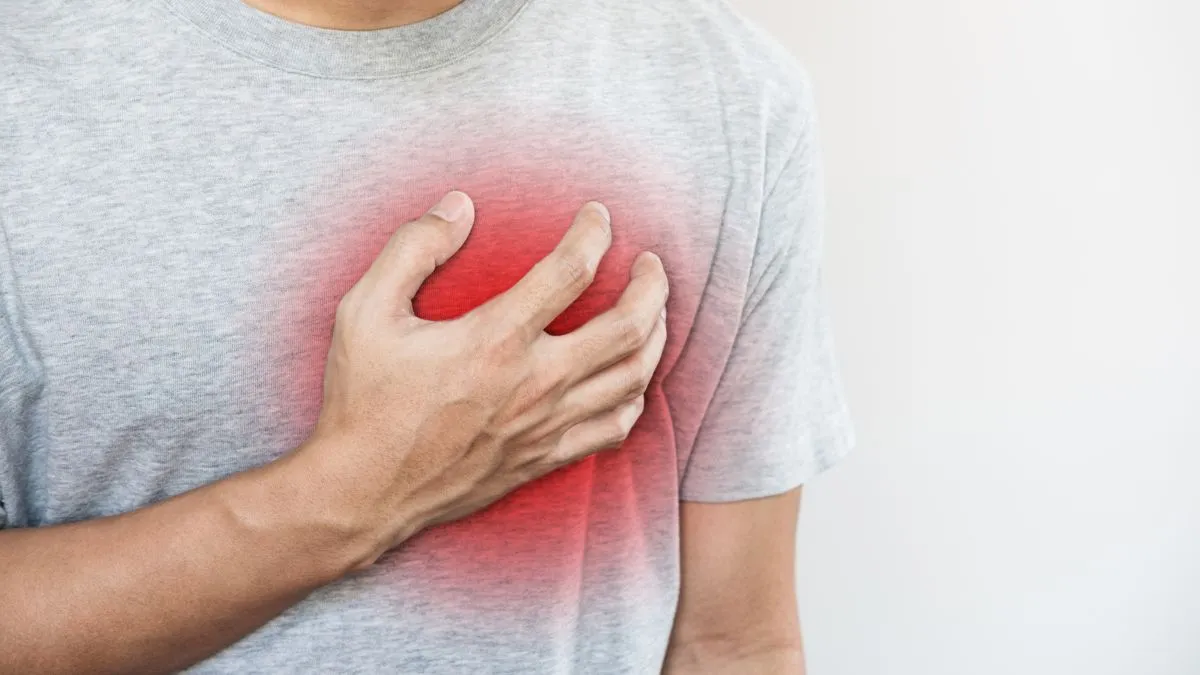- By Bornika Das
- Fri, 27 Jun 2025 07:58 PM (IST)
- Source:JND
In recent years, India has witnessed a troubling rise in cases of “silent” heart attacks, cardiac episodes that strike without the typical warning signs such as chest pain or shortness of breath. These stealthy attacks often go unnoticed until it’s too late, leading to severe complications or even sudden death. With cardiovascular diseases already being the leading cause of mortality in the country, the growing prevalence of these undetected heart attacks has become a silent epidemic. Doctors and health experts warn that lifestyle changes, stress, and lack of awareness are playing a pivotal role in this health crisis.
Recent reports reveal that an estimated 5 to 6 lakh people in the country die every year from sudden cardiac arrests, and many of these cases occur in individuals under the age of 50. Despite advances in diagnostics and awareness campaigns, a key challenge remains in the early recognition and effective response to heart attack symptoms, especially those that manifest silently. Silent heart attacks can easily be mistaken for indigestion, fatigue, or mild discomfort, making them particularly dangerous, especially for people with diabetes, high blood pressure, or a sedentary lifestyle. In conversation with The Daily Jagran, Dr. Chakradhar Pedada, MBBS, MD, DM, Consultant Interventional Cardiologist, Apollo Hospitals, Visakhapatnam, shares insights on how and why silent heart attacks are witnessing a rise in India.
The idea that heart issues always announce themselves with dramatic chest pain is outdated. Many heart attacks begin with subtle, nonspecific signs that are often misinterpreted or ignored. Dr. Chakradhar Pedada states, “Some of the most frequently reported signs of heart attack include discomfort or pain in the arms, back, neck, jaw or stomach, shortness of breath, cold sweats, nausea and sudden fatigue.” In women, these indicators may be even less conventional, presenting as shoulder pain, dizziness or an unusual sense of anxiety. These silent signals, if dismissed, delay critical care and significantly reduce the odds of survival.
ALSO READ: Are You Ignoring These Silent Signs Of A Stroke, Heart Attack Or Sepsis? Know From Doctor
According to a report, a cohort of 3,106 people with no known history of cardiovascular disease were evaluated. Of these, 1,789 individuals were asymptomatic. Yet nearly 46 per cent of them were found to have coronary calcium deposits, an early marker of atherosclerosis. Even more concerning, 25 per cent of those with deposits had obstructive coronary artery disease that required urgent and aggressive treatment. A notable 2.5 per cent of those affected were under the age of 40. This indicates that being asymptomatic does not imply being risk-free and underscores the importance of regular cardiovascular screening even in the absence of warning signs.
Timely recognition of heart attack symptoms can be the difference between life and death. Immediate interventions such as calling emergency services, administering aspirin under guidance and initiating CPR if the person is unresponsive from the bedrock of cardiac arrest treatment in out-of-hospital settings. Once at the hospital, treatment modalities can include clot-dissolving medications, balloon angioplasty, stent placement and coronary artery bypass grafting, depending on the severity and type of blockage.
-1751034397961.jpg)
Heart Attack Rise In India (Image Credits: Canva)
The first hour after a cardiac event, often called the golden hour, is critical. Studies show that treating a heart attack within this window can reduce mortality by more than 50 per cent. However, this outcome is only possible if emergency cardiac care is initiated promptly and supported by a well-equipped emergency department that functions with precision and speed.
India’s leading hospitals are adopting a more integrated model of emergency cardiac care, one that mirrors global best practices in managing critical heart conditions. Dr. Chakradhar Pedada mentions, “At the core of this approach is the Heart Team—a cohesive unit comprising emergency physicians, cardiologists, cardiac surgeons, intensivists, nurses and rehabilitation experts—working in tandem to deliver time-sensitive, evidence-based care.” This collaborative model has shown clear benefits in improving heart attack survival rates and reducing complications during hospitalisation. Whether it is deciding the course of treatment in acute myocardial infarction or managing complex valve diseases, the team-based approach ensures swift decision-making backed by multiple expert opinions.
ALSO READ: 5 Things Your Cardiologist Wants You To Know In Your 30s
Despite these advances, access to high-quality emergency cardiac care remains uneven. Urban centres are home to hospitals equipped with advanced imaging tools, cath labs and 24x7 cardiac units. In contrast, many rural areas continue to lack access to even basic cardiac emergency management facilities. The National Health Profile and other health surveys repeatedly highlight this urban-rural divide, which impedes timely intervention and contributes to poor heart attack survival rates in underserved regions. The increase in heart-related incidents is further illustrated by a 12.5 per cent spike in reported heart attacks in 2022, with over 32,000 deaths recorded in that year alone. These numbers emphasise not only the growing prevalence of heart disease but also the importance of public education in identifying early signs of cardiac events and seeking timely care.
To address the often-silent progression of cardiovascular disease, India needs to move on two fronts: greater public understanding of early heart attack symptoms and more agile, well-equipped emergency cardiac care systems. Many cardiac emergencies unfold quietly, without the dramatic signs people expect. Recognising these subtle indicators and responding swiftly can change the trajectory of a patient’s survival. With a rising burden of heart disease across age groups, particularly among those under 50, cardiac emergency management must become sharper, grounded in technology, training, and multidisciplinary coordination. A responsive emergency department is the frontline defence in improving heart attack survival rates and enhancing long-term outcomes.

